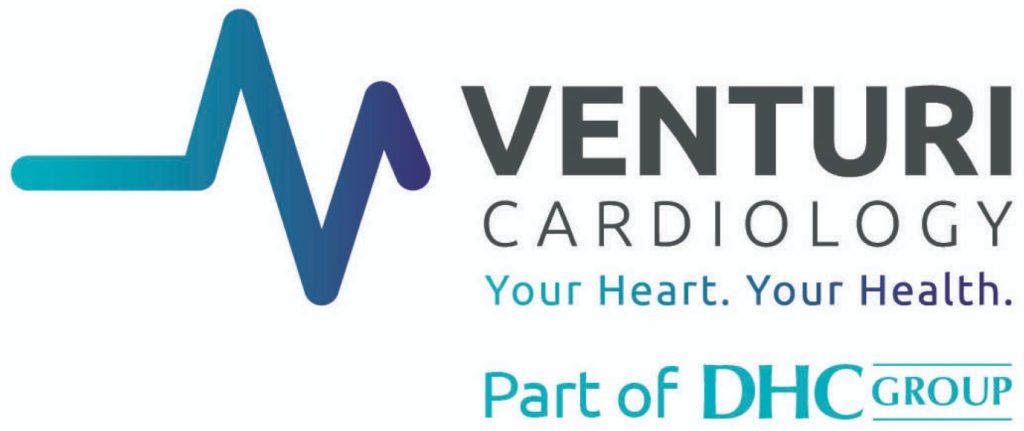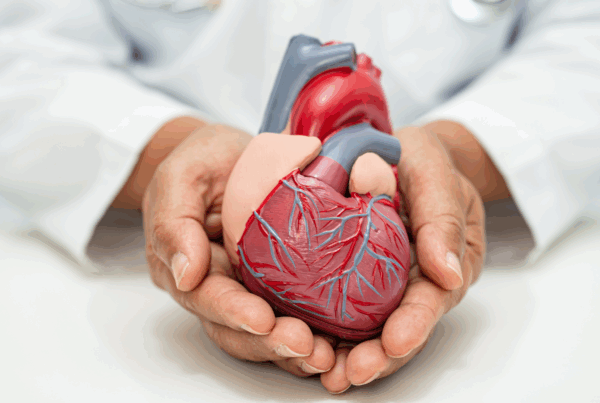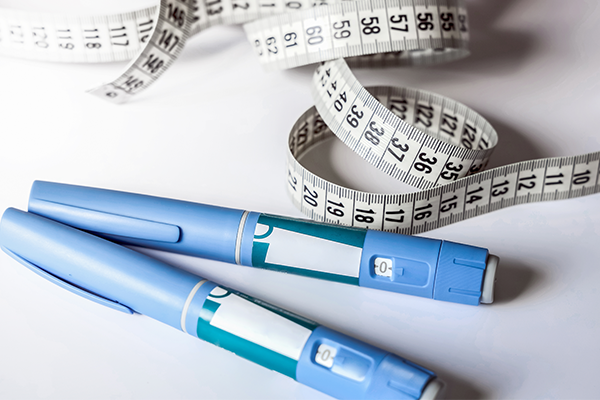Heart and circulatory disease account for over one quarter of all deaths in the UK. Forty-four thousand people under the age of 75 will die from heart disease every year and the North West has one of the highest rates in the country. Therefore it would be beneficial for those based in the North West and beyond, who are concerned or at risk, to have a cardiology test.
Heart disease takes many forms but one of the best indicators that you are at risk of heart disease is plaque, particularly calcified plaque.
What is calcified plaque and why does it matter?
A good way to imagine plaque is like a raised spot on the inside of your arteries which rather than being filled with pus, is filled with cholesterol. At some point that spot bursts and this creates a small blood clot within the artery. This hardens becoming calcified plaque. One spot bursting isn’t usually a problem and you are likely to be completely unaware that it has happened. It starts to create problems when more ‘spots’ explode within your arteries and the inside of your arteries become bumpy. At this point your blood becomes sticky and must work harder to get through your bumpy arteries. This process of developing calcified plaque is called atherosclerosis and it takes many years.
By the age of 40, 25% of all men have some plaque.
By age 50, it goes up to 50%
And by age 60, 80-85% of all men have some plaque.
Very few women have any plaque pre menopause. However, post menopause they begin to catch up quite quickly.
If someone has plaque in their 40’s, they are at a higher risk of a heart attack or stroke because the calcification process has started earlier, and the body has longer for the ‘spots’ to explode.
In this practical guide, I will help you to understand the relevant risk factors for you, give you the tools you need to reduce those risks and talk you through a non-invasive pain-free test that can accurately predict your level of risk. Common risk factors that we will unpack include family history, diet, weight, physical activity and smoking.
- Understand your family history
Your family history is a crucial piece of the jigsaw when understanding more accurately your risk of cardiovascular disease. It used to be that if your mother, father or one of your siblings had died from heart related illness before they were 65, then that put you in the higher risk category and was a red flag to your doctor that it is worth getting you tested. However, in more recent years and as people are living longer, cardiologists have increased that threshold to 75 years old.
Companies such 23andme and Rightangled give you information on how your genes can affect your health, for example your predisposition to certain diseases such as cancer and diabetes. They can identify markers in your DNA that increase or decrease your chance of developing cardiovascular disease. In the future it is expected that scores such as the polygenic risk score will be able to accurately identify which foods (grains, red meat or particular kinds of dairy for example) you should avoid that might increase your risk of heart disease.
However, research has already proven, that even if you are in this higher risk bracket and perhaps one of your parents or a sibling has sadly died from heart related disease, your lifestyle choices can improve your chance of heart disease by up to 50%. Your DNA does not have to be your destiny. Exercising regularly, maintaining a healthy weight, not smoking, reducing alcohol consumption and sleeping well are all part of a healthy lifestyle. These factors go a long way to preventing cardiovascular disease.
2. Eat well
A diet that looks after your heart is one that maximises nutrient density. This means eating foods that are high in lean protein, fibre and good fats (omega 3) such as oily fish, nuts, eggs (the only vitamin not in an egg is vitamin C!), extra virgin olive oil and avocado. In addition, green leafy vegetables help the body to make nitric oxide (a chemical vital to artery health). Fresh fruit and above ground vegetables give further vitamins, fibre and nutrients.
It is also a diet that minimises the glycaemic impact. By this I mean, reducing or eliminating your intake of processed, package food. Whilst high glycaemic index (GI) carbohydrates were an important part of our evolution – we needed to store fat in the summer to see us through the winter – things have moved on. These days we need to avoid empty calories or C.R.A.P – completely refined and processed food.
When you eat high sugar, high starch foods, you can over fill your adipocytes (fat storing cells) which can go on to make you insulin resistant. Inside every cell is something called the mitochondria, this is what turns food into energy. You need to eat foods are kind to the mitochondria, and they are the nutrient rich foods mentioned above.
3. The waist to height ratio
It is a common misconception that knowing your BMI is the end of the story when it comes to looking after your heart. A better indicator of risk is your waist to height or hip to height ratio. This is because fat stored around your abdomen is a good indication that you are also storing fat around your internal organs. This increases your risk of heart related illnesses. As a rule, your waist should be less than half your height. For example, someone who is 5 ft 5should try to keep their waistline smaller than 33 inches or 84 centimetres. A person who is six feet tall should keep their waist circumference below 36 inches or 91 centimetres. Clearly, this is a general rule of thumb which does not necessarily mean someone with a larger waist or hip to height ratio has heart disease. However, it can be an indicator that you are storing fat in a way that may be harmful to your heart. Click here for an online waist to height calculator.
4. Exercise regularly
It is good to exercise. NHS advice states adults aged 19-64 should do at least 150 minutes of moderate exercise or 75 minutes of vigorous exercise per week, alongside strength exercises. Regular exercise keeps us healthy, protects us from diseases, improves our heart health and reduces mortality. If you do not exercise at all, I would recommend starting small. Go for a walk, build up your strength and stamina, then gradually increase what you are doing. Keep it interesting and fun. If you can, take up a team sport or do something sociable like a dance or yoga class. Once you have built up your strength and stamina, the best kind of exercise for heart health is high intensity interval training or HIIT. There are different levels of HIIT training to suit different levels of fitness. Talk to your GP or local leisure centre for more information.
Whatever you do, make sure you remain aware of your body. If you start to experience any symptoms, for example, if you become short of breath, have chest pains or you have palpitations, seek medical advice. Don’t ignore the warnings your body is giving you.
5. Don’t smoke
This one is very easy: smoking is the single biggest cause of heart disease. When you inhale smoke, either passively or from smoking yourself, chemicals released from the cigarette make the lining of your arteries inflamed and your blood sticky. If you smoke, stop! Even if you have smoked your whole life, stopping now will still be of benefit to your heart. One year after you have stopped smoking your risk of heart disease is half that of a smoker.
6. Take back control
If you choose to make any of the lifestyle changes above, you are already taking back control and giving you and your heart a much better chance. If you feel you are at higher risk for heart disease, either because of previous lifestyle choices, family history or pre-existing condition such a diabetes and you want some expert advice, we recommend booking an appointment with one of the consultant cardiologists. We can talk you through the various options available to you and work with you to put together a plan of action. Bookings will be available from April. By downloading this guide, you have already submitted your email address to receive information on our opening offers.
Diagnostic tests: the calcium score test
Wouldn’t it be nice if you could take one simple, non-invasive test and it could accurately predict your likelihood of a heart attack in the next 5-10 years?
What if you were then given the tools and support to make the necessary lifestyle changes to dramatically reduce that risk?
What if I were to tell you that this is all possible…?
One of the best tests available, the gold standard in heart scanning, is the calcium score test. Whilst this will not be right for everyone, it allows the cardiologist to see clear images of the arteries around the heart.
So, what is the calcium score test and why do you need it?
A ‘calcium score’ is a low dose CT scan of the heart. It is completely non-invasive, takes around 20 minutes and is pain free. It allows cardiologists to measure the build-up of calcium plaque within the walls of a patient’s heart arteries. It is a bit like a mammogram for the heart.
So, why don’t we routinely give everyone a calcium score test?
We don’t want to unnecessarily medicalise someone or subject them to a process which might cause them anxiety. However, if you are having angina symptoms or if you fit into one of the other risk categories e.g., you smoke, you are overweight, you have high blood pressure or high cholesterol or you have a strong family history of heart disease, then this test is the most precise screening that you can have. The results can give you the push you need to make some changes to your life or perhaps your arteries are squeaky clean, and the test can offer you the reassurance and peace of mind you are looking for.
If you decide to book through Venturi, we will be with you every step of the way, supporting you on your path to complete cardiovascular health.
We would love to work with you on your heart healthcare journey. Read more about heart health here
Book a consultation today and get a free point of care blood test which checks for diabetes, inflammation and abnormal blood lipids.
Looking forward to seeing you soon.












